Empowering the Energy Sector with Digital Twin Technology
The energy sector is under immense pressure to balance the increasing global demand for power with sustainability goals, operational efficiency, and regulatory compliance. Digital Twin technology is emerging as a powerful tool to meet these challenges, offering dynamic, data-driven solutions that enhance decision-making, optimise performance, and ensure system resilience.
By creating digital replicas of physical assets, processes, and systems, Digital Twins provide a holistic view of energy operations, enabling organisations to achieve greater efficiency, reduce downtime, and drive innovation. Let’s explore how Digital Twin technology is transforming the energy sector.
1. Optimising Renewable Energy Systems
The shift to renewable energy sources introduces unique challenges, including variability in power generation, grid integration complexities, and maintenance requirements for new infrastructure. Digital Twins address these issues by enabling real-time monitoring, predictive maintenance, and scenario planning.
- How Digital Twins Help:
- Simulate energy output based on weather patterns and optimise the integration of solar, wind, and hydroelectric power into the grid.
- Monitor the performance of renewable energy assets, identifying inefficiencies and potential faults before they escalate.
- Test grid modifications virtually to ensure seamless integration and minimal disruption.
With these capabilities, Digital Twins play a critical role in maximising the reliability and efficiency of renewable energy systems.
2. Enhancing Grid Stability and Resilience
The modern energy grid is a complex, interconnected system that requires constant management to balance supply and demand, prevent outages, and respond to emergencies. Digital Twins provide operators with real-time insights and predictive analytics, ensuring stability and resilience.
- How Digital Twins Help:
- Provide a real-time digital representation of grid operations, enabling rapid responses to fluctuations or faults.
- Simulate load scenarios and stress tests to predict and prevent potential outages.
- Integrate data from smart meters, substations, and sensors to enhance grid visibility and operational control.
By leveraging Digital Twins, grid operators can maintain a robust and adaptive energy infrastructure that meets modern demands.
3. Improving Asset Management and Maintenance
Energy sector assets—such as power plants, substations, and transmission lines—are critical to operations but often require significant resources to maintain. Digital Twins optimise asset management by offering a comprehensive view of their condition, performance, and maintenance needs.
- How Digital Twins Help:
- Track asset health in real time, identifying signs of wear or failure before they result in costly downtime.
- Enable predictive maintenance, reducing unplanned outages and extending asset lifespan.
- Simulate the impact of upgrades or replacements, ensuring informed investment decisions.
These capabilities not only reduce maintenance costs but also improve overall system reliability.
4. Supporting Energy Transition Goals
As governments and organisations push toward carbon neutrality and renewable energy adoption, Digital Twins provide the tools to plan, implement, and monitor energy transition initiatives effectively.
- How Digital Twins Help:
- Model the impact of transitioning from fossil fuels to renewable energy on operational performance and costs.
- Monitor emissions in real time, ensuring compliance with environmental regulations.
- Evaluate the feasibility of energy storage solutions, such as battery systems or hydrogen fuel cells, to support renewable integration.
Digital Twins empower energy companies to navigate the complexities of the energy transition while maintaining operational efficiency and profitability.
5. Driving Innovation in Energy Trading and Distribution
The decentralisation of energy production—driven by renewables, microgrids, and prosumer contributions—requires innovative approaches to trading and distribution. Digital Twins enhance these processes by providing detailed, data-driven insights.
- How Digital Twins Help:
- Simulate market scenarios to optimise energy trading strategies and pricing models.
- Monitor and manage distributed energy resources (DERs) to balance local supply and demand.
- Provide transparency and trust in energy transactions through secure, real-time data sharing.
These capabilities position energy companies to adapt to and capitalise on the evolving energy landscape.
6. Use Case: Power Plant Digital Twins
One of the most impactful applications of Digital Twin technology in the energy sector is in power plants. By creating a digital replica of the plant, operators can:
- Monitor equipment performance and efficiency in real time.
- Simulate operational changes, such as fuel switching or load adjustments, to optimise output.
- Predict maintenance needs and extend the lifespan of critical components.
This holistic approach ensures maximum efficiency and reliability while reducing operational costs.
The Future of Energy with Digital Twins
Digital Twin technology is revolutionising the energy sector by providing actionable insights, enhancing operational efficiency, and enabling organisations to meet sustainability goals. From renewable energy systems to grid management and asset optimisation, the potential applications are vast and transformative.
At 4pointO Limited, we specialise in delivering tailored Digital Twin solutions that address the unique challenges of the energy industry. Whether it’s improving grid stability, supporting energy transition, or driving innovation, our expertise ensures measurable impact and long-term value.
Discover how Digital Twin technology can transform your energy operations—contact us today to learn more.

